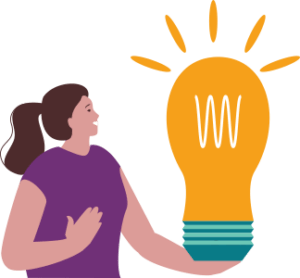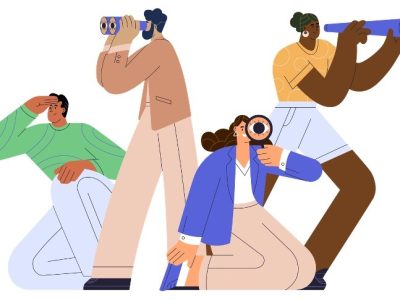 We all know the problem: we are in desperate times in this country when it comes to mental health. Demand continues to surge, while mental health clinician shortages create endless wait lists and unmet needs across communities. It is no surprise that we focus on access as the primary goal.
We all know the problem: we are in desperate times in this country when it comes to mental health. Demand continues to surge, while mental health clinician shortages create endless wait lists and unmet needs across communities. It is no surprise that we focus on access as the primary goal.
If we manage to radically expand access, and everyone who needs mental healthcare gets an appointment with a therapist, will we have succeeded?
Not by a long shot. Most people who make that first appointment will never return. In fact, for decades, research has shown that the most common number of therapy sessions people attend is one. Yes, astoundingly, the majority of people do not come back for a second session.
 Why only 1 session?
Why only 1 session?
Sometimes it is because people got what they needed in a single session. More commonly, however, it is because someone didn’t get any of their needs met. Instead, the first appointment is an ‘Intake’: a bureaucratic marathon, filled with endless, mostly irrelevant closed questions.
What medications are you taking?
What medical conditions do you have?
Do you have any family history of mental health or SUD?
Do you use alcohol or other drugs?
Are you adopted?
Who lives in your home?
Have you ever been incarcerated?
What is your sexual orientation?
Have you sought mental health services before?
Any history of hospitalizations?
Any thoughts now or in the past of wanting to hurt yourself? Hurt others?
Have you ever been diagnosed with a learning disability?
These are just a fraction of standard mental health intake questions. Many intakes also include depression screening (PHQ-9), anxiety screening (GAD-7), Adverse Childhood Experiences (ACE) screening, and more. The sheer volume of repetitive questions can leave clients feeling exhausted and disengaged; the exclusive focus on problems and pathology and can leave clients feeling demoralized and discouraged.
 Why do we do this?
Why do we do this?
Most of us were trained this way. We were told it was clinically necessary, that we needed to gather mountains of information so we could surgically sift through, analyze, and organize it into a diagnosis and a treatment plan. This reasoning is profoundly flawed, and based on a collection of myths.
Myth: Gathering as much information as possible helps the client.
Reality: When intake forms or EHR templates dictate how we spend a first session, we miss the chance to truly listen to the client’s concerns, their perceptions of the cause, and how we can help. Lengthy, standardized intakes yield less high-quality information when compared to relying on thoughtful open-ended questions and skillful empathic listening.
Myth: Gathering all this information is necessary to come to a diagnosis.
Reality: Mental health diagnoses are notoriously unreliable, overly simplistic, inequitable, and are driven primarily by payment requirements. Spending a precious first (and possibly only) session aiming for an ‘accurate’ diagnosis isn’t treatment; it is frittering away precious time with clients.
Myth: We need this mountain of information to develop a treatment plan.
Reality: Treatment plans aren’t developed based on the 50 questions we ask a client. Instead, we focus on genuinely understanding clients’ hopes and how we can support them in making changes in their lives. This agreement on goals and methods, known as the working alliance, is crucial to the therapeutic relationship and is correlated with positive patient outcomes.
 Intake procedures are not only clinically unjustified but also potentially harmful. How?
Intake procedures are not only clinically unjustified but also potentially harmful. How?
– Power Imbalances: Engaging in formal, lengthy intakes places us firmly in charge of the session, with an implicit message of “we will discuss only what I deem important.” This dynamic can lead clients to adopt a passive role or push back, both of which damage the therapeutic relationship.
– Low Quality Listening: Formal intakes necessitate typing on computers or writing during sessions, impairing our ability to listen well. Clients don’t feel like they have our undivided attention, because they don’t. This makes them less likely to share vulnerable (usually important) information about themselves.
– Missed Opportunities: Intakes prevent therapists from accurately understanding what brought clients to therapy, who they are, and what they need to discuss, hindering the development of trust and rapport. Of those who don’t return after the first session, 25% cite a lack of benefit or therapeutic alliance.
-Treatment Delays: Despite a lack of research to support this practice, intakes have been inexplicably separated from treatment. Patients are required to complete an intake before they can start receiving treatment (?!)
![]()
![]()
![]()
![]()
 I work in an organization that mandates formal intakes. What can I do?
I work in an organization that mandates formal intakes. What can I do?
Even within these systems, we can mitigate potential harm and preserve the first session for warmth, engagement, listening, and instilling hope. We can:
– Push back! Does it really have to be done this way? Often intake norms in organizations are driven by little more than habits passed down from leader to leader, or inaccurate ideas about what is needed to bill insurance.
– Leave it to the end and ‘switch hats’: If the questions are required (insurance company, grant deliverables) delay these until the end of the session, after establishing a warm alliance. Then, explicitly switch roles: “I’m going to switch now to some business-related questions before we end.”Alternatively, fill in the EHR template after the session ends, using information obtained through natural conversation with the client.
– No screenings during sessions. Screenings like ACE, PHQ, GAD, and TSQ can be completed via email, apps, reception, or other methods.Once our client is in the room, filling out paperwork is just displacing time we could be having a real conversation.
What does it look like to do things differently?
In our mental health counseling course, The Lay Counselor Academy, we don’t do “Intakes”, first sessions are simply “First Sessions”.
- Communicating warmth
- Listening deeply, communicating non-judgment and empathy
- Inspiring confidence that counseling can help (hope)
By reimagining the first session as a space for genuine connection, empathy, and hope, we can foster stronger therapeutic alliances, enhance client outcomes, and dedicate more time to the meaningful work that drew us to this field.

 Why only 1 session?
Why only 1 session? Intake procedures are not only clinically unjustified but also potentially harmful. How?
Intake procedures are not only clinically unjustified but also potentially harmful. How? I work in an organization that mandates formal intakes. What can I do?
I work in an organization that mandates formal intakes. What can I do?



